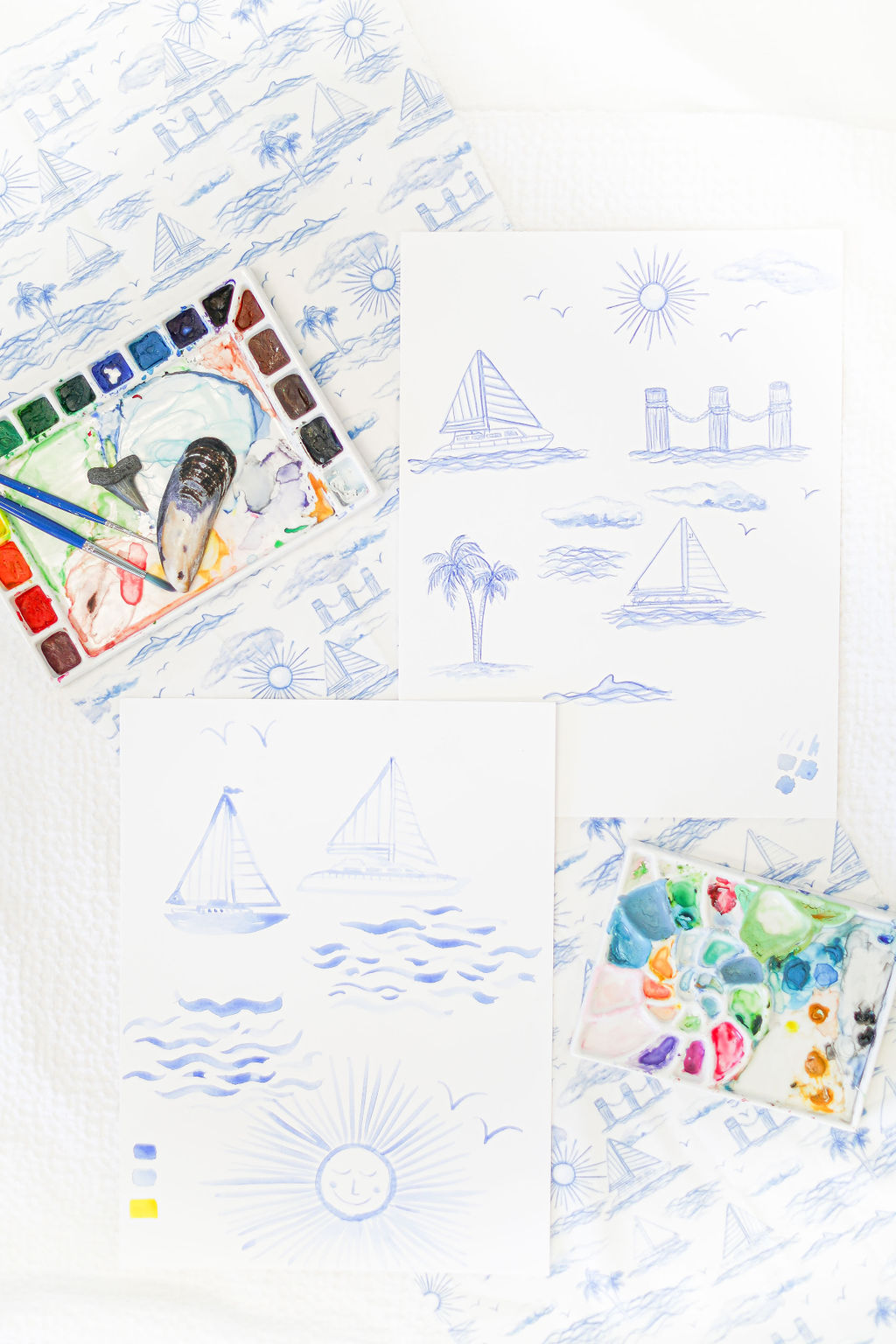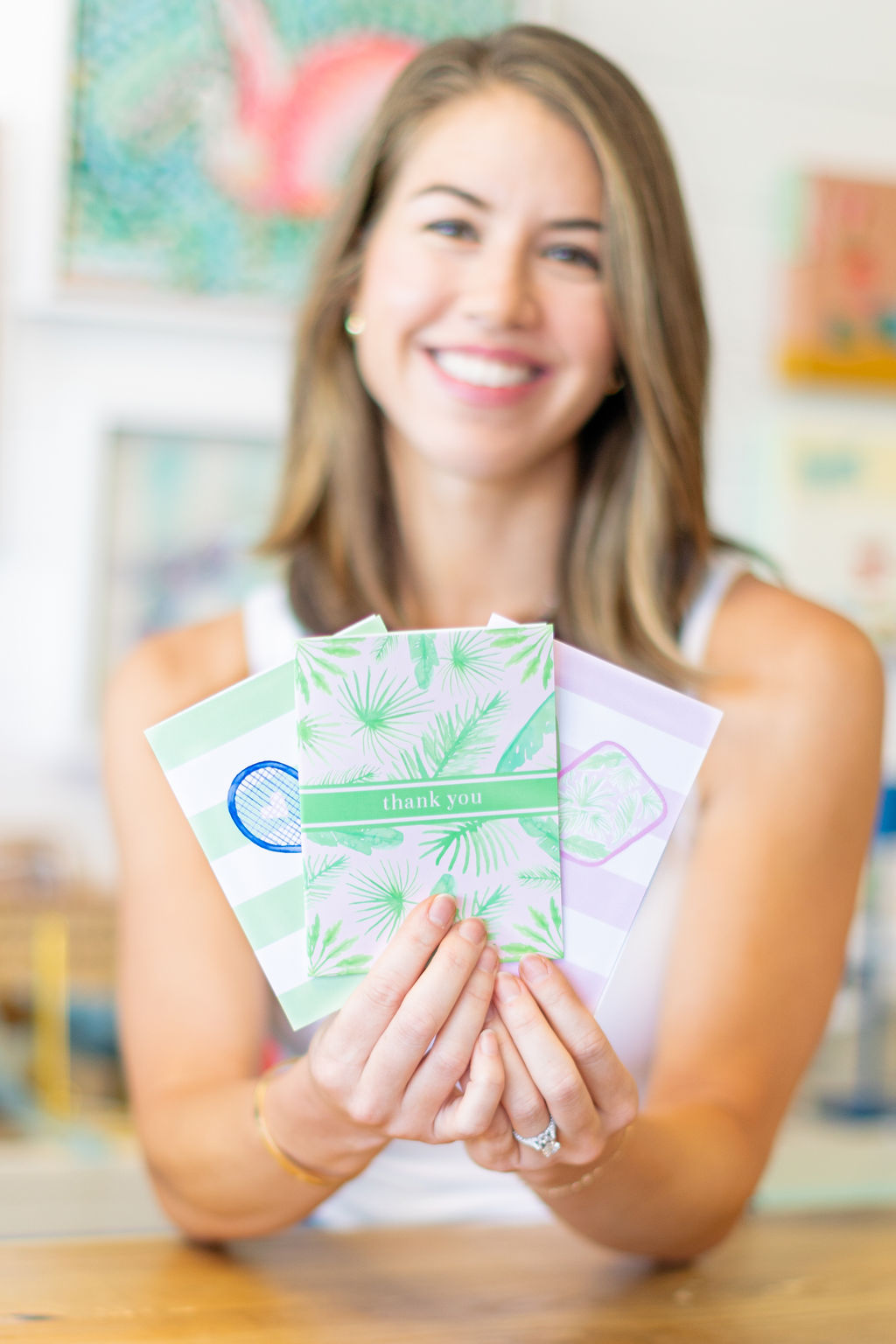We caught up with the brilliant and insightful Stephanie Troxler a few weeks ago and have shared our conversation below.
Stephanie, thanks for joining us, excited to have you contributing your stories and insights. Have you been able to earn a full-time living from your creative work? If so, can you walk us through your journey and how you made it happen? Was it like that from day one? If not, what were some of the major steps and milestones and do you think you could have sped up the process somehow knowing what you know now?
It’s taken me a couple of years, but I am finally earning a steady and predictable income as an artist. At the very beginning of my career, I first started selling on Etsy. I offered art prints, greeting cards, and gift tags. The sales weren’t consistent and Etsy would take quite a bit as their commission, so I decided to leave the platform and open my own website. At this point, I had learned how to use photoshop to create a variety of products using my artwork and patterns and had began selling my products to retailers. Everything I learned about setting up files for printing and product development, I learned through a course. In this same course, I also learned about art licensing, where I essentially rent out or sell my designs and patterns to a brand who wants to use them on their products. I think if I knew about licensing, sooner I would have not been as eager to create my own products and pursue wholesale.

Awesome – so before we get into the rest of our questions, can you briefly introduce yourself to our readers.
My name is Stephanie Troxler and I own my small business studio based in Florida called Little Blue Designs. I am a watercolor artist and surface pattern designer. When I am off the clock, I’m a wife, a twin mom, and dog mom to our little blue Frenchie. I have always been creative, but I was never a formally trained artist. In fact, I was a dental hygienist for several years. During the pandemic, I had given birth to our twins and was craving a creative outlet, so I turned to one of my favorite hobbies, painting. Acrylic was my go to, but I had always wanted to give watercolor a try. After receiving positive feedback from friends and family, I decided to pursue art full time. Today I continue to sell prints, stationery, and gifts on my website and am focusing more on licensing my art and patterns for brand collaborations. I’ve had the pleasure of collaborating with brands such as La Point pickleball, Petite Keep, Minted, and Southern Tide. My designs are colorful, cheerful, and coastal inspired. I love creating designs that spark joy and inspire spaces.

Can you tell us about a time you’ve had to pivot?
I don’t think you can have success in in your career or personal life without being comfortable with pivoting. Challenges are always going to arise, so being open minded and being OK with redirection is essential for growth. I’m not ashamed to admit that I have changed direction at least 3 times in the last 4 years with Little Blue Designs. This is because my priorities changed and I didn’t know what I know now. My overall goal hasn’t changed, I still want to share Little Blue Designs with the world and see my designs in stores and on products, but what has changed is the “how”. I always thought the best way to achieve this was to create my own products using my artwork. I quickly found out how time consuming and tedious inventory, shipping, sales, etc. were. This was also taking away from my creative time. I was faced with a decision, either hire help in order to scale and become a “manager” or focus on licensing my art. What is most important to me is having the ability to be present for my young family, earn a steady income from my art, and seeing my artwork on functional items available in stores. All roads led to licensing. If I hadn’t been willing to pivot, I wouldn’t have been able to hone in on what’s important and draw a clear path towards my end goal.

What can society do to ensure an environment that’s helpful to artists and creatives?
The best way to support artists is to value their art. The general population doesn’t have a real understanding or appreciation for the art process. It’s similar to fast fashion vs. slow fashion. Society is so used to being able to purchase cheap items, even knock offs, either at large stores or have them conveniently shipped to your house in a day or two. What happened to valuing artisans and their handmade original products? It’s hard to compete with Homegoods prices, but artists should never feel like they need to under price their art to do so. One of the hardest parts about being an artist is putting a price tag on your work. One of the most frustrating things I hear about, and have experienced myself, is price haggling. I’m not referring to price negotiation in a licensing deal, I am specifically referring to low balling. On the flipside of that, one of the most gratifying feelings as an artist is feeling valued. Repeat clients and clients that offer to pay more for a service or piece are the best supporters. Finding small shops or galleries that strongly promote artists are essential for creating a thriving creative ecosystem.
Contact Info:
- Website: https://littlebluedesignsus.com
- Instagram: https://www.instagram.com/littlebluedesigns


Image Credits
Finding The Light Photography


